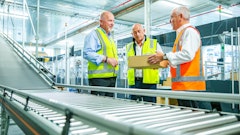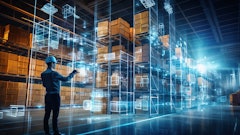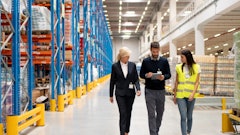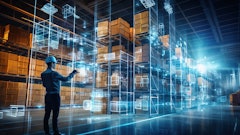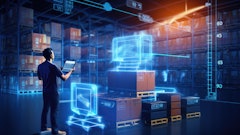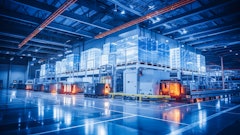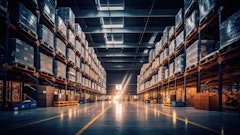
Despite conversations around labor shortages and improving efficiencies across warehouses, there has yet to be a significant shift toward mass adoption of automation. It may come as a surprise to many that almost 80% of warehouses are still operated manually, according to DHL. The ones that use conveyors or pick and place solutions account for merely 15% of the warehouses, with only 5% of warehouses operating fully automated.
However, there’s massive demand in the market to transform manual warehouses to keep up with customer demand. Specifically, in the retail space, leading companies are increasingly adopting automated solutions such as Automated Guided Vehicles (AGVs) and Autonomous Mobile Robots (AMRs) to carry out everyday tasks. In a survey by Accenture, supply chain leaders cited warehouse automation as one of their topmost priorities.
However, there are major concerns inhibiting the introduction of automation at scale, including:
- Long and complex implementation processes that require expert talent that is not widely available
- Prohibitive cost related to changes in the warehouse infrastructure
- Re-engineering of existing operations
- Lack of ability to address the variability of use cases without requiring heavy customization
- High level of change management needed, driven by negative sentiment of workers as well as real need for investment in training and new safety measures
The result is that only very large companies, who employ internal technical teams and have access to capital, adopt warehouse automation technology and even then, only for discrete repetitive tasks.
Although it will take time for the industry to get to a place where automation solutions become more mainstream, advancements in traditional AI and generative AI specifically, are expected to accelerate the process.
Three Ways AI Can Drive Supply Chain Transformation
1. Enabling decision-making by machines
By giving machines and automation tools the ability to make informed decisions, we can remove the need to invest in the infrastructure and software that tries to predict, or control, all possible decisions. Unlike current automation solutions that are limited by the pre-coded software of the machine, an AI powered machine with the “nerve center” to perceive, analyze and make decisions can quickly adapt to new environments, tasks and requirements. This increases the number of use cases supported by a single machine, reduces the need to make expensive infrastructure changes, and increases uptime of the machines. All of these reduce the barrier to entry and increase the ROI from automation projects.
2. Simplifying implementation and operations
Right now, every move of the robot requires a code to be written by highly skilled engineers who are scarce and expensive. Every use case requires a different solution that takes years to operationalize, and every task has unique requirements that require a high level of customization. This means long development cycles, complex deployments, and frequent disruption to operations when changes are required. Generative AI has the power to enable simpler, more intuitive programming of robots and assigning of tasks using natural language models, thus enabling warehouse workers, without any technical knowledge, to design, deploy and operate solutions.
Imagine that every warehouse owner could reconfigure their robots with a software engine powered by generative AI, allowing it to address their specific needs.
For example, the installation in a new site can be done with a simple set of intuitive command, such as, “Please explore my new warehouse, create me a map, and program instructions to move safely between every two machines on the floor.”
3. Better human and machine interaction
The intelligence and adaptability of automation solutions plays a pivotal role in reducing the change management needed while at the same time increasing worker safety. Machines powered by AI will allow warehouse owners to get the best of both worlds—the flexibility and adaptability of humans with the accuracy, reliability, and resiliency of a machine. Today, robots move around like machines, often not “walking” in straight lines and appearing odd and scary to humans. Machines that behave and communicate like humans are likely to increase the trust and reduce the resistance of humans working alongside them.
Perception Is Key
AI-powered visual perception technology will play a continuously growing role in enabling these transformations as it helps a machine perceive its environment and understand the world around them. A powerful and affordable perception technology also helps robots carry out complex tasks safely and to communicate with humans effectively. Humans drive with eyes and biological neural nets, so it makes sense that cameras and silicon neural nets are the only way to achieve generalized solutions to self-driving. This is equally true for autonomous machines that are required to deal with a significantly higher number of environments, workflows, and behaviors. The ability to easily integrate and operationalize a capability to perceive the surroundings with color and texture, to read text and symbols and to learn and adapt, will be critical for enabling the transformations highlighted above.
An AI-powered automation solution would translate to a more connected and dependable warehouse while bringing down the initial cost as well as total cost of ownership. It will also mean that small and mid-sized organizations can compete better through an enhanced customer experience as omnichannel becomes more mainstage in the coming years.











